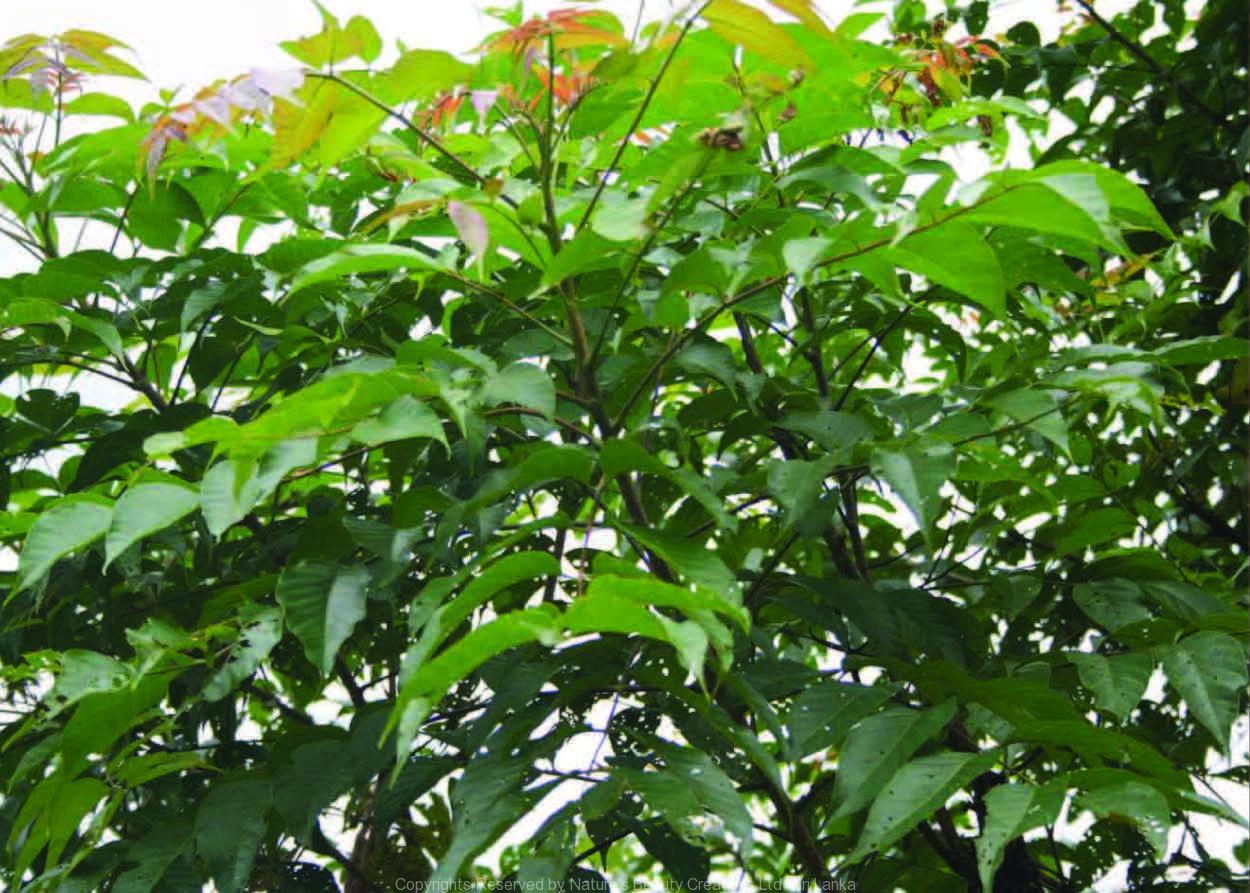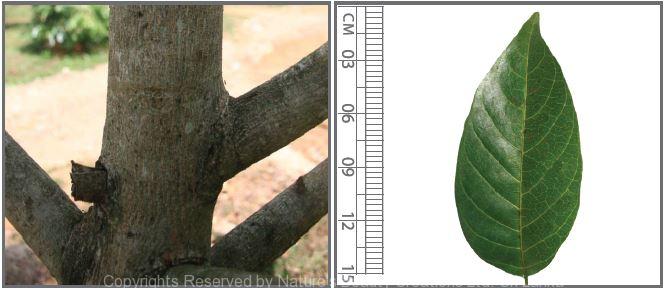

Traditional Knowledge
Useful plant parts :
Bark, gum and leaf
Uses in traditional medicine :
- Bark is used to prepare lotions for ulcers, impetiginous eruptions and to treat toothache
- Gum is used on sprains and bruises
- Leaves are used on swellings, elephantiasis and to treat body pains
Scientific Research
Chemical constituents:
Flavonoid glycoside: quercetin-3- arabinoside, phenolic acid: ellagic acid and dihydroxyflavanols, β-sitosterol, anthraquinone: physcion and physcionanthranol B from flowers, leaves and stem bark; leucocyanidin from heartwood
Bioactivity :
Aqueous and alcohol extracts of bark: counteract skin ageing and cutaneous hyperpigmentation, anti-inflammatory, hypoglycaemic, zoosporicidal
Clinical:
References : Islam, M. T and Tahara, S. (2000), Dihydroflavonols from Lannea coromandelica, Phytochemistry, 54(8), 901-7. Islam, M. T. et al., (2002), Zoosporicidal activity of polyflavonoid tannin identified in Lannea coromandelica stem bark against phytopathogenic oomycete Aphanomyces cochlioides, J Agric Food Chem, 50(23), 6697-703. Mannan, A. et al., (2010), Antihyperglycemic activity evaluation of Leucas aspera (Wild.) Link leaf and stem and Lannea coromandelica (Houtt.) Merr. Bark extract in mice, Advances in natural and applied sciences, 4(3), 385-388. Pauly, G. et al., (2003), Use of at least one extract of a plant of the genus Lannea in a cosmetic or dermopharmaceutical composition, US Patent 6599537. Sankara, S. S. and Nair, A. G. R., (1971), Polyphenols of Lannea coromandelica, Phytochemistry, 10(8), 1939-1940. Singh, S. and Singh, G. B., (1994), Anti-inflammatory activity of Lannea coromandelica bark extract in rats, Phytotherapy Research, 8(5), 311-313.
Copyrights Reserved By
Natures Beauty Creations



